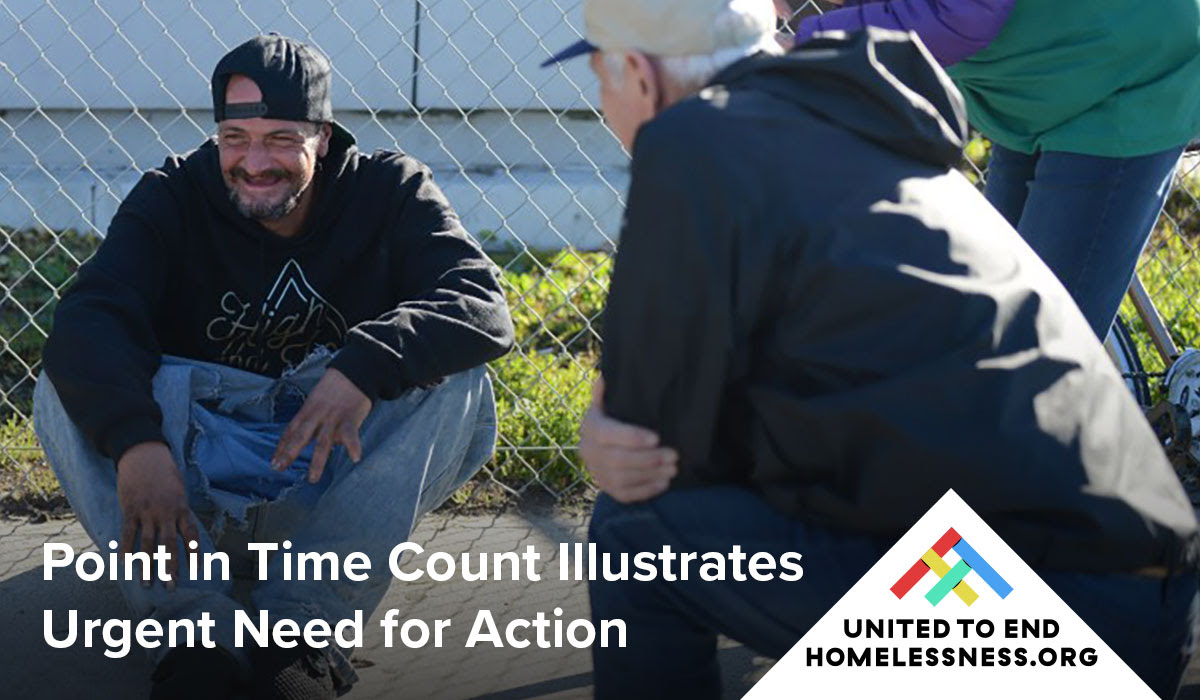We hereby present the following on homelessness:
2019 Point-In-Time Count Results Released
| ||||||||||||||||
 
With my staff at the 2019 PIT deployment center at Family Assistance Ministries in San Clemente.
The extrapolation method we used is HUD compliant and entirely acceptable. To that end, the County created a unique identifier and used a survey on a phone app. Volunteers went to areas where homeless people were and filled out the survey, adding points to the GIS map.  Approximately 2,200 people completed all the survey questions. This gave us much better accuracy of the data, and we also spoke directly with homeless individuals about their specific needs and barriers to resources. As such, we gained valuable information about our homeless population in a one-day snapshot, as this is a hidden population that moves around. For example, if we did a count today, they would likely be in different places. In prior counts, volunteers only interviewed about 300 to 400 homeless people and extrapolated the numbers based on countywide demographics. A factor that could have increased the numbers in this year's PIT is we counted families differently than in prior count methodologies, so they were definitely under-counted in the past. In the 2019 PIT count, we asked our family solution collaborators to connect with their clients who were homeless on the night of January 24. Results showed 110 families were unsheltered, as opposed to in 2017, when we had only 20 families, because we just don't see as many families in a street count. Individuals experiencing homelessness were broken into different demographic groups, including sheltered and unsheltered, veterans, transitional age youth, seniors and families. In addition, those surveyed were able to self-report if they had substance abuse issues, serious mental health issues, and if they had a physical disability, as well as other demographic factors.  Furthermore, seventy-three percent have their last permanent address here, and 92 percent spend most of their time here, particularly in the North and Central Service Planning Areas of Orange County. Of note, Orange County saw a 121 percent increase in the number of emergency shelter beds from 2017 to 2019. This was an increase in 1,390 beds in all. As previously stated, people familiar with the homeless populations in their respective cities volunteered for the 2019 PIT count, with familiar and trained volunteers counting over 800 square miles. We may have missed a few, but when homeless individuals said they had already been counted, we felt we hit a saturation point. 
With the 2019 PIT volunteers in South County.
The final report on our PIT count will be submitted to the U.S Department of Housing and Urban Development (HUD) on April 30. To view the press release and an infographic on the 2019 PIT count results, please click here. | ||||||||||||||||
| Homelessness in Orange County Update | ||||||||||||||||
Welcome to the Education Corner, A Daily Outsider Property Working to Help transform our Conversation About Our World: http://ordinaryfaces.business.site
Creative Commons License
Wednesday, May 8, 2019
Notations From the Grid (Weekly Edition): On The State of Homelessness
Subscribe to:
Post Comments (Atom)






No comments:
Post a Comment